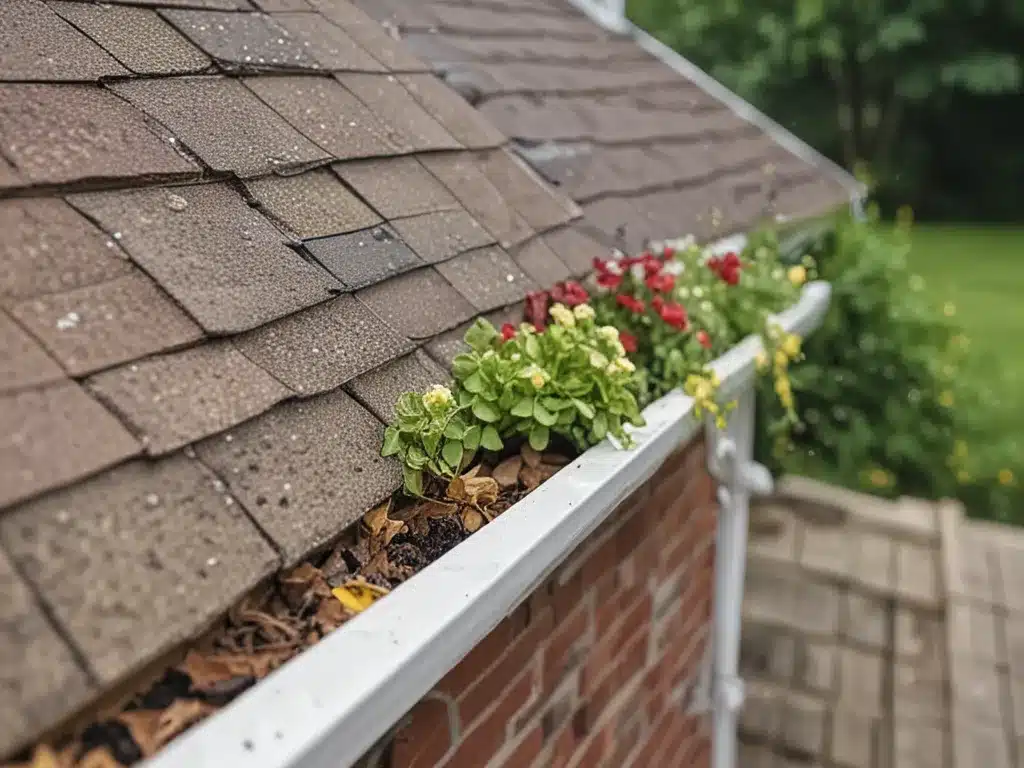As spring arrives, it’s a great time to inspect and clean out your home’s gutters and downspouts. Clogged gutters can lead to water damage if rainwater and melting snow have nowhere to go. Taking the time for gutter maintenance now will help prevent problems down the road. Here’s how I tackle my spring gutter cleaning.
Inspect the Gutters
The first step is to take a close look at the gutters on your home. I like to bring along a small step ladder and flashlight.
Look for Leaks
Carefully go along the entire perimeter of the home and inspect each section of gutter. Look for any cracks or holes where water could leak out. Leaks often occur at seams where gutters meet. Make note of any needed gutter repairs.
Check for Clogs
Peer inside each gutter and downspout, shining the flashlight to illuminate the interior. Look for any debris, leaves, sticks or buildup of dirt and grime. Clogs prevent proper drainage and cause overflow. Mark any clogged areas that need to be addressed.
Assess Slope and Alignment
Proper slope is crucial for gutters to work effectively. Water should flow towards downspouts. Check that gutters slope slightly downward in the right direction. Also look for sagging or misaligned sections that could impede drainage.
Clear Out Gutter Debris
Now it’s time to get the gutters cleaned out after identifying any problem spots.
Use a Ladder Safely
To reach the gutters, set up your ladder securely on level ground. Have someone steady the ladder if possible. Never lean too far to the side while on the ladder. Take care when ascending and descending. Move the ladder as needed to access all areas.
Scoop and Sweep
For minor debris, simply scoop out leaves, sticks and other debris by hand, wearing thick protective gloves. You can also sweep gutters clean using a plastic gutter cleaning tool. Having a bag handy makes collecting debris easy.
Flush with a Hose
For gutters clogged with heavy debris, dirt or grime, spraying them out with a hose can help dislodge the mess. Aim the nozzle directly inside each section until the outflow runs clear.
Consider Gutter Guards
Adding gutter guards or leaf guards provides ongoing protection by preventing future debris buildup inside gutters. Guards are placed over the gutter openings. Leaf guards may be a good option if you’re tired of frequent gutter cleaning.
Check Downspouts
Once gutters are clear, turn your attention to the downspouts.
Remove Elbows
Downspout elbows often collect debris. To check for clogs, temporarily remove elbow sections at the bottom of each downspout. Clear any compacted debris. Reattach them after.
Confirm Drainage
It’s key that water can flow freely from downspouts away from the house. Make sure discharge points are clear. Clear any debris at the base. Downspout water should fully drain off your property and not pool near foundations. Address any drainage issues.
Test Flow
To confirm everything is working properly, use a hose to run water through cleaned gutters and downspouts. Check that the water streams out the downspouts. This will reveal any remaining trouble spots to tackle.
Perform Any Needed Repairs
If you noticed any damaged or deteriorated areas during inspection, now is the ideal time to repair them. Addressing these issues will improve functionality and prevent further damage.
Patch Holes
Use a metal gutter patch to mend any small holes or leaks in steel or aluminum gutters. Follow manufacturer instructions. For larger holes, a section of gutter might need replacing.
Rehang Sagging Gutters
Sagging gutters likely just need reattachment at gutter spikes. You may need extra spikes for improved support. Use a level to ensure they hang correctly.
Replace Missing Downspout Sections
Replace any missing elbows or downspout sections with matching components to restore proper water flow. Use slip joint pliers to remove and attach parts.
Unclog Lingering Clogs
If hosing a downspout reveals persistent clogs, use a plumber’s snake to fully clear the blockage. Insert the flexible corkscrew tip down the downspout and twist to dislodge debris.
Address Improper Slope
Improperly sloped gutters can be rehung at a better angle using shims under supporting spikes. Or install gutter leveling screws for easy slope adjustments. Getting the slope right improves drainage.
Taking a day for seasonal gutter cleaning and tuning up your drainage system helps protect your home. Then you can rest easy knowing heavy spring rains and summer storms will keep your home’s exterior dry and damage-free. Maintaining your gutters is time well spent.







